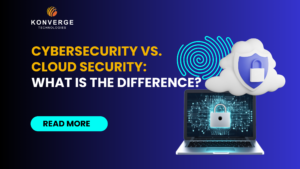
Virtual Firewall: A Comprehensive Overview

A virtual firewall, also known as a cloud firewall, is a network security solution that provides the same functionality as a physical firewall, but in a virtualized form. Virtual firewalls are designed to protect cloud-based resources from cyber threats and to enforce security policies across different environments. In this blog, we will explore what a virtual firewall is, how it works, and why it is needed.
What is a virtual firewall?
A virtual firewall is a software-based, cloud-based virtualized firewall appliance that runs on a hypervisor, which is a software layer that abstracts the physical resources of a computer system. A virtual firewall can be deployed in various scenarios, such as:
Public cloud deployments
Public organizations use virtual firewalls to secure their data and applications hosted on public cloud platforms, such as AWS, Azure, or GCP. Virtual firewalls can inspect and filter the traffic that enters and exits the cloud environment, as well as the traffic between different cloud regions or accounts.
Private cloud deployments
Private organizations use virtualized firewalls to secure their private cloud environments, which are typically hosted on-premises or in dedicated data centers. Virtual firewalls in private clouds provide features such as automated provisioning, scalability, and dynamic policy management to simplify security in private clouds.
Branch locations and software-defined environments
Organizations can leverage virtual firewalls to secure their branch offices and remote sites, which are often connected by software-defined networks (SDN) or software-defined wide area networks (SD-WAN). Virtual firewalls can be easily deployed on SD-WAN appliances with built-in hypervisor software to provide security at the network edge.
How does a virtual firewall work?
A virtual firewall works by inspecting and controlling the traffic flows between different zones of trust within a network. A zone of trust is a logical segment of a network that has a defined level of security. For example, an untrusted zone could be the public Internet, while a trusted zone could be an internal network. A virtual firewall can grant or deny access to traffic based on predefined rules and policies.
A virtual firewall can also provide advanced security features, such as:
Threat prevention
Virtual firewalls can detect and block malicious traffic, such as malware, ransomware, phishing, denial-of-service attacks, etc. Virtual firewalls can also perform deep packet inspection (DPI), URL filtering, SSL decryption, DNS security, file blocking, etc.
Attack surface reduction
Virtual firewalls can limit the exposure of cloud-based resources to potential threats by segmenting the network into smaller units. This technique is called microsegmentation, which isolates workloads from each other and secures them individually.
Application-centric security policies
Virtual firewalls can identify and control the traffic based on the applications and users involved, rather than just the IP addresses and ports. This allows for more granular and flexible security policies that align with the business needs.
Why is a virtual firewall needed?
A virtual firewall is needed because traditional physical firewalls are not suitable for securing cloud-based environments. Some of the challenges that physical firewalls face in the cloud are:
Scalability
The physical firewalls have limited capacity and performance, which may not be able to keep up with the dynamic and elastic nature of cloud environments. Virtual firewalls can scale up or down as needed to match the demand of the cloud workloads.
Visibility
Unlike the physical firewalls that may not have full visibility into the traffic within the cloud environment, especially the east-west traffic that flows between different workloads or containers, virtual firewalls can easily monitor and secure the internal traffic within the cloud environment.
Consistency
Virtual firewalls can ensure consistent security policies across different cloud platforms or locations that Physical firewalls may not be able to provide uniformly across all cloud environments.
Virtual firewall is a network security solution that provides the same functionality as a physical firewall, but in a virtualized form. A virtual firewall can inspect and control both north-south and east-west traffic within a network, as well as provide advanced features such as threat prevention, attack surface reduction, and application-centric security policies because the virtual firewalls are designed to protect cloud-based resources from cyber threats and to enforce security policies across different environments. A virtual firewall is an essential tool for securing cloud-based environments in today’s digital world. Trust Konverge Technologies for protecting your business from being attacked by cyber attacks as they empower you with the implementation of the virtual firewall into your system. Stay safe and protected!



